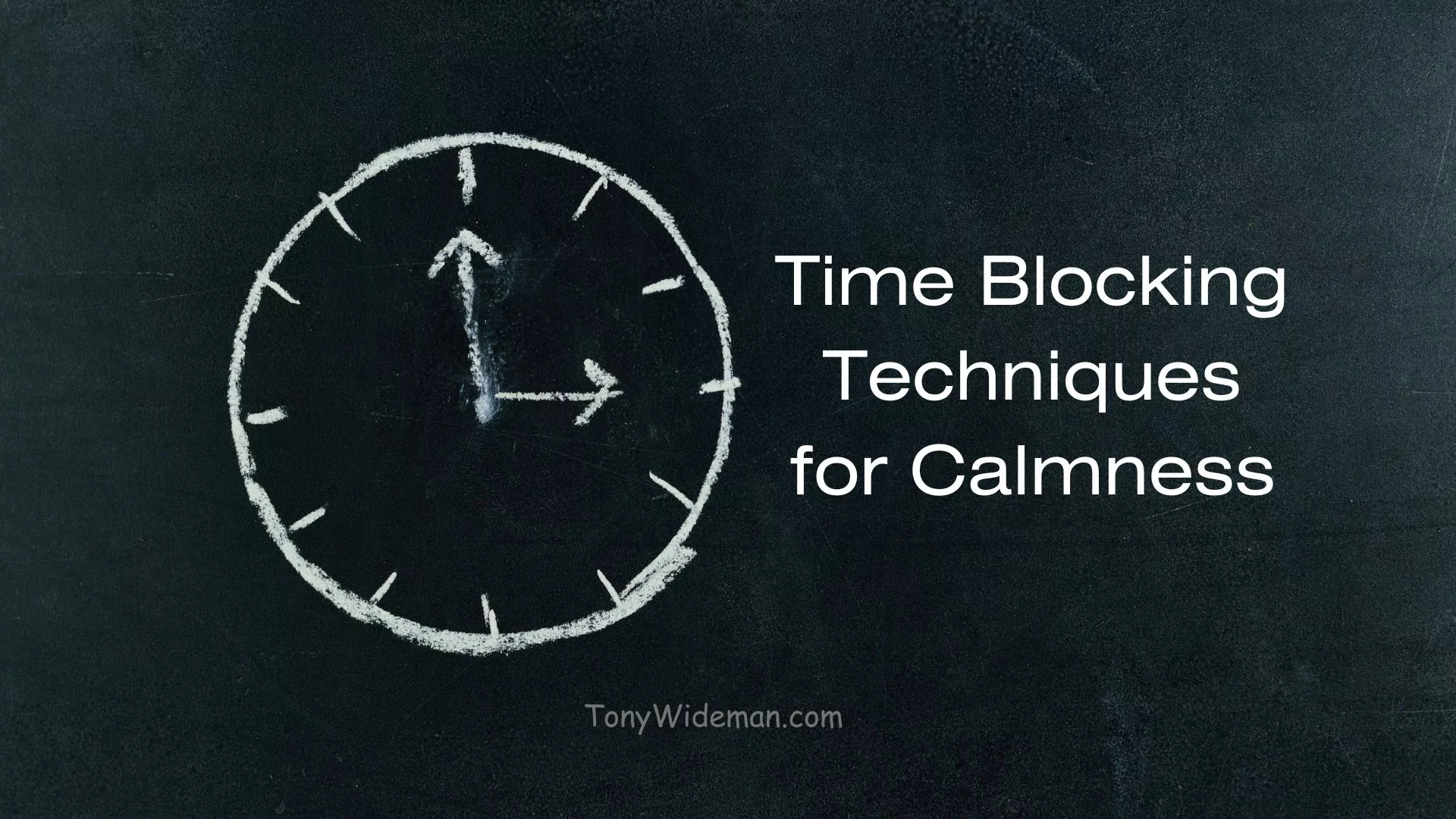The Ultimate Minimalism When Moving Checklist For Stress-Free Relocation
Moving can be stressful, and packing years of memories and belongings into boxes makes things even more complex. My approach to relocation has always been centered on minimalism. If you can cut out the unnecessary and focus on the essentials, the entire process becomes easier and more rewarding. In this post, I walk you through the ultimate minimalism when moving checklist designed to reduce stress and simplify your relocation.
Your Ultimate Moving Checklist
Moving to a new home represents one of life’s most significant transitions. Whether relocating across town or the country, proper planning transforms what could be an overwhelming experience into a manageable, even positive one. I have created this comprehensive moving checklist to guide you through every step of the process, from two months before your move to the weeks following your arrival in your new home.
Embracing Minimalism in Your Move
Minimalism isn’t just about owning fewer things; it’s a lifestyle that encourages you to appreciate quality over quantity. When it comes to moving, a minimalist mindset can help reduce the clutter both mentally and physically. Instead of packing every single item you own, focusing on what matters can create space not only in your new home but in your life. This section explains why minimalism is worth considering before you start packing.
By implementing a minimalist approach, you can enjoy several benefits. For one, you’ll save time and money by avoiding extra packing materials and storage costs for items you rarely use. Plus, a decluttered environment brings a level of calm and order that makes settling into new surroundings smoother. The idea is to keep things simple so that every item you hold has a purpose or sentimental value.
The Philosophy Behind Minimalism
Taking a closer look at minimalism reveals that it is as much about mindset as it is about physical belongings. When you choose to live, you are allowed to focus on experiences rather than things. This shift in perspective lets you invest in memories and relationships instead of accumulating unnecessary objects. Many who have adopted this lifestyle find that limiting possessions leads to an increase in personal creativity and emotional freedom.
Living minimally encourages you to assess every possession for its actual value. Instead of holding onto items out of habit or guilt, you learn to celebrate quality, multipurpose items that truly serve a role in your daily life. Over time, this process fosters a sense of liberation and clarity. The newfound space in your surroundings often mirrors a clearer mental space, paving the way for healthier living habits and a renewed focus on what matters.
This philosophy extends beyond moves. It influences your choices in hobbies, your work environment, and even your relationships. By consistently choosing quality over quantity, you nurture a lifestyle where each decision is intentional and meaningful.
Your Ultimate Minimalism Moving Checklist
A well-planned checklist is a great starting point for ensuring you’re organized and clear about what to bring along with you. Below is the checklist I rely on to make my moves as stress-free as possible.
- Declutter Early: Start by sorting through your belongings well before your moving day. Keep items that you use frequently and hold value, and let go of those that add unnecessary weight.
- Create Categories: Divide your items into three main groups: Essentials, Sentimental, and Disposable. This helps in deciding what to pack, donate, or discard.
- Gather Packing Supplies: If you have fewer items, you can eliminate unnecessary packing supplies. Opt for recycled boxes, protective wraps, and minimalist labels that make identification quick and easy.
- Plan Your Boxes Strategically: Pack boxes by room or category to reduce the time spent sorting through items later. A minimalist move focuses on efficiency, so only pack what you need.
- Prepare an Essentials Bag: Keep a go-to bag with necessities like toiletries, a change of clothes, important documents, and basic kitchen items. This travel bag should help you function smoothly until you can settle into your new home.
- Digitalize Documents and Photos: Scan essential documents and keep digital copies to minimize physical clutter. This is especially useful when relocating, where space and organization matter most.
Using an all-in-one checklist like this can dramatically streamline the moving process. The list not only makes it easier to manage your time and resources, but it also reinforces the commitment to a simpler and more focused life. By planning, you set yourself up for a move that is both orderly and refreshing.
Planning Your Minimalist Move
Before you even start sorting through your items, having a plan is useful. A clear strategy helps you see the bigger picture and avoids last-minute chaos. I’ve found that mapping out each stage of the move—from sorting your belongings to settling into your new space—makes the process much more manageable.
Begin with a timeline that breaks the overall move into manageable chunks. Allocate specific days for decluttering, packing, and organizing. Doing things in smaller steps prevents feelings of being overwhelmed. Plus, having a scheduled plan means you’re more likely to stick to the minimalist philosophy rather than rushing to pack everything.
Many people make the mistake of leaving critical tasks until the very end, but building in sufficient time for each stage is a key component of a stress-free move. Think of your plan as a roadmap that keeps you surrounded by clear goals and defined tasks. When you have every step laid out from start to finish, unexpected issues become easier to manage and resolve.
8 Weeks Before Moving: Early Planning for Success
The key to a stress-free move lies in starting early. Eight weeks before your moving date provides ample time to organize, declutter, and make crucial decisions without feeling rushed.
Create a Moving Binder or Digital Dashboard
Establish a centralized system for tracking all moving-related documents, quotes, receipts, and checklists. A physical binder with dividers works well for those who prefer tangible organization, while digital options like Notion, Trello, or dedicated moving apps provide excellent alternatives for tech-savvy movers.
Research and Select Moving Companies
Begin collecting quotes from at least three reputable moving companies. Look beyond basic pricing to compare services offered, insurance coverage, cancellation policies, and customer reviews. For interstate moves, verify the company’s USDOT number through the Federal Motor Carrier Safety Administration (FMCSA) website.
Create a Preliminary Budget
Moving costs often exceed initial estimates. Create a detailed budget accounting for:
- Moving company fees or truck rental
- Packing supplies
- Storage costs (if applicable)
- Travel expenses (accommodations, meals, fuel)
- Utility connection/disconnection fees
- Security deposits and first month’s rent
- Emergency fund for unexpected expenses (typically 10-15% of your total moving budget)
6 Weeks Before Moving: Administrative Tasks and Deeper Planning
With two months until moving day, focus on administrative tasks and more detailed planning elements.
Submit Change of Address Forms
File your official change of address with the postal service, which can be done online for a small fee. The post office typically begins forwarding mail on your requested date and continues this service for 12 months, giving you time to update your address with specific senders.
Notify Important Institutions
Create a comprehensive list of organizations that need your updated address:
- Financial institutions (banks, credit card companies, loan providers)
- Insurance providers (health, auto, home/renters)
- Government agencies (IRS, Social Security, voter registration)
- Subscription services
- Medical providers
- Employers and educational institutions
Transfer or Cancel Utilities and Services
Contact current utility providers to schedule disconnection and set up services at your new residence:
- Electricity
- Gas
- Water and sewage
- Internet and cable
- Waste management
- Lawn care or cleaning services
Plan for Special Items
Identify items requiring special handling, including:
- High-value artwork or antiques
- Musical instruments
- Safes or heavy furniture
- Aquariums
- Plants (especially if moving across state lines)
- Hazardous materials that movers won’t transport
4 Weeks Before Moving: Packing Strategy and Logistics
One month before moving day, transition from planning to implementation with a focus on packing strategy.
Gather Packing Supplies
Purchase or collect:
- Boxes in various sizes (including specialty boxes for dishes, wardrobe, etc.)
- Packing paper and bubble wrap
- Packing tape and dispensers
- Permanent markers for labeling
- Color-coded labels or stickers
- Furniture, blankets, and padding
- Plastic wrap for securing items
- Box cutters
Develop a Systematic Packing Approach
Create a room-by-room packing schedule, beginning with the least frequently used areas. Aim to pack 2-3 boxes per day to avoid last-minute rushing. As you pack each box:
- Label with contents, room destination, and handling instructions
- Create a detailed inventory in your moving binder or app
- Take photos of electronic setups before disassembling
- Keep boxes under 50 pounds for easier lifting
Schedule Time Off Work
Request time off work for both moving day and at least one day afterward to begin the unpacking process.
Confirm Moving Arrangements
Reconfirm details with your moving company or finalize truck rental arrangements. Verify:
- Moving date and estimated arrival time
- Current and destination addresses
- Special requirements for your buildings (service elevator reservations, loading dock access, parking permits)
- Payment methods and timing
2 Weeks Before Moving: Final Preparations
With two weeks remaining, focus on finalizing arrangements and packing essential items.
Pack Room by Room
Continue methodical packing, leaving only essential items unpacked. For each room:
- Please take photos of valuable items showing their condition
- Disassemble furniture that won’t be needed before the move
- Keep hardware in labeled bags taped to the corresponding furniture
- Consider the layout of your new home when labeling boxes with destination rooms
Prepare a “First Day” Box
Pack essentials you’ll need immediately upon arrival:
- Toiletries and medications
- Several changes of clothes
- Basic kitchenware (plate, cup, utensils for each family member)
- Shower curtain and towels
- Bedding
- Phone chargers
- Basic tools
- Cleaning supplies
- Toilet paper and paper towels
Clean as You Go
As rooms become empty, clean them thoroughly. This practice not only ensures you leave your current home in good condition but also prevents the overwhelming task of cleaning everything at once.
Make Arrangements for Pets and Plants
Plan for the safe transport of pets and plants, which often require special consideration:
- Research pet transportation requirements, especially for interstate or international moves
- Schedule veterinary visits for health certificates if needed
- Arrange pet-friendly accommodations for travel days
- Research plant transportation regulations, particularly for interstate moves
1 Week Before Moving: Final Countdown
The final week focuses on last-minute tasks and preparations for moving day itself.
Finish Essential Packing
Complete all but the most critical packing, leaving out only what you’ll need in the final days.
Prepare Appliances
Empty and clean refrigerators and freezers 24-48 hours before moving to allow time for defrosting. Disconnect and prepare washing machines according to the manufacturer’s instructions.
Secure Important Documents and Valuables
Gather and personally transport irreplaceable items:
- Birth certificates and passports
- Financial documents
- Medical records
- Insurance policies
- Jewelry and family heirlooms
- External hard drives and backups
Confirm Details Once More
Make final confirmations with moving companies, real estate agents, landlords, and utility companies.
Prepare Payment for Movers
Have the preferred payment method ready, including cash for tips (typically $20-$30 per mover for a local move, more for long-distance).
Complete Moving Timeline Flowchart. Click to open diagram. Tap to open
Moving Day: Execution and Oversight
Moving day has arrived. With proper preparation, this day should be primarily about supervision and direction rather than last-minute scrambling.
Conduct a Final Walkthrough
Before movers arrive (or before loading your rental truck):
- Ensure all boxes are properly sealed and labeled
- Check all closets, drawers, attics, and storage spaces
- Verify that nothing has been overlooked
- Document the condition of your empty home with photos
- Take final utility meter readings
Direct Traffic
Position yourself at the entrance to direct movers (or helpers) regarding:
- Which items require special handling
- Which boxes contain fragile items
- The correct room destinations for furniture and boxes
- Any last-minute changes to the moving plan
Clean Your Empty Home
Once everything has been removed:
- Perform a final cleaning
- Address any minor damage that needs repair
- Leave keys, garage door openers, and access cards as arranged with the landlord or new owners
Prepare for Arrival at Your New Home
If possible, arrive at your new home before the moving truck to:
- Verify utilities are functioning
- Clean critical areas if needed
- Plan furniture placement
- Identify the best entrance and path for movers
Begin the Decluttering Process
Moving provides the perfect opportunity to evaluate your possessions. Start room by room, creating “keep,” “sell,” “donate,” and “discard” categories. Consider whether items will serve a purpose or bring joy in your new space. For items you’ve been undecided about for years, this represents the perfect time to make final decisions.
Additional Preparation Strategies
Beyond the basics, several additional strategies can make your move even smoother. It helps to schedule periodic check-ins with yourself during the preparation phase. Use these moments to review your progress, adjust your timeline as needed, and reassess your belongings. If you find that certain items no longer fit your minimalist criteria, now is the perfect time to let them go.
Moreover, considering a backup plan can help ease any unforeseen complications. This might involve having an extra storage option available or knowing local donation centers in case you need to offload items quickly. Even planning small rewards for yourself after major milestones can boost motivation and help keep stress at bay.
Decluttering: Letting Go of the Unnecessary
The first step towards a minimalist move is letting go of what you don’t need. Decluttering is not just about tossing things, but about finding value in fewer, better-chosen items. By streamlining your belongings, you make room for what truly matters in your new space.
A practical method I use is going room by room. This allows you to thoroughly inspect what each space holds and decide what genuinely adds to your life. Ask yourself questions such as: “Do I use this regularly?” and “Does this item bring me joy?” Items that fail these checks become prime candidates for donation, resale, or recycling.
Every piece you let go of makes it easier to organize and decorate your new home. In many ways, decluttering is like spring cleaning your soul. The process of removing excess not only lightens your physical load but also clears mental clutter, paving the way for a fresher start. The act of deciding what to keep can feel liberating as it reinforces the commitment to a lifestyle where each possession holds real significance.
Packing with Purpose
Once you have decluttered, packing becomes a task of careful selection rather than hurried stuffing. A minimalist packing strategy means that every item packed has a designated space and a clear role in your daily life. By focusing on precision and purpose, you limit the chaos that often accompanies traditional packing methods.
Start by packing items that are not used daily. Labeling boxes by room and content is a straightforward method that saves time when unpacking. Instead of making multiple trips to search for key items, a well-labeled box system lets you know where everything is right from the start. Consider methods that save space, such as rolling clothes rather than folding them, or vacuum-sealing bedding and textiles for a tighter fit.
A few techniques that work well include:
- Rolling Clothes: This method not only saves space but also minimizes wrinkles, allowing your wardrobe to stay neat during transit.
- Vacuum-Sealing: For textiles like bedding or clothing, this technique reduces bulk and frees up room for essentials, making packing more efficient.
- Using the Right Box Size: Packing heavy items in small boxes and lighter, bulkier items in larger boxes helps maintain balance and ensure safety throughout the move.
These small hacks can transform the packing stage from a laborious process to a more systematic, enjoyable task. With careful planning and attention to detail, the entire process becomes less about the stress of moving and more about embracing a new chapter in your life.
Setting Up Your New Home: Keep It Simple
Arriving at your new home is a prime opportunity to create a space that truly reflects a clutter-free lifestyle. Adopting minimalist decor doesn’t mean you have to live in a barren or uninspired environment. It’s more about choosing items that serve multiple purposes and bring enduring value, rather than simply filling every available space with object after object.
When unpacking, focus on arranging each area with functionality in mind. Place furniture where it is genuinely needed, and organize your essentials in a way that mirrors the calm and simplicity of your minimalist move. For example, rather than overcrowding a room with decorative items, choose a few pieces that highlight your style while adding to the functionality of the space.
It is also a wise idea to give yourself several days to adjust to the new setting before fully committing to the decor. This gradual process allows you to experiment with different layouts and ultimately set up a home that fosters relaxation and productivity. Remember, the goal is to have a space where every item carries meaning and purpose, making daily routines smoother and more enjoyable.
Embracing the Minimalist Lifestyle Beyond the Move
Minimalism isn’t limited to packing boxes and setting up a new space—it’s a long-term lifestyle choice. After you have moved, continue to nurture this approach by regularly reassessing your possessions and routines. Over time, you will notice that having fewer items isn’t a sacrifice; it’s a conscious decision to fill your life with quality moments, experiences, and relationships.
In your new environment, consider setting aside a dedicated space for activities that promote mindfulness and creativity. This may be a small reading nook, a workstation that encourages productivity without distractions, or simply a well-organized living area that inspires calmness. Adopting these habits not only reinforces the benefits of minimalism but also ensures that the clarity achieved during your move permeates every aspect of your daily life.
Troubleshooting Common Moving Challenges
No move is entirely free of obstacles, and even a minimalist relocation can encounter hiccups. Common challenges include last-minute packing, misplacement of vital items, and the emotional difficulty of parting with long-held possessions. The key to overcoming these issues lies in sticking diligently to your checklist and timeline.
If you begin decluttering early and adhere closely to your plan, issues such as being overloaded with items at the last minute become far less likely. When problems do arise, approach them one step at a time. Return to your checklist, identify which part of the process might benefit from some adjustment, and then make the necessary changes. Often, a calm and methodical reassessment will reveal a solution without needing to rush or compromise your minimalist ideals.
Taking a moment to step back and evaluate the situation can often bring clarity. Remember, every challenge is simply part of the overall ride, offering valuable lessons for future moves. With a bit of patience and persistence, even the most stressful moments can be transformed into opportunities for growth.
Advanced Minimalist Moving Tips
After settling the basics, several advanced tips can not only ease the moving process but also help maintain a minimalist lifestyle long after the move is complete. These strategies are built on years of experience and are designed to streamline your workflow and living environment further.
Design a Functional Layout:
Think about how you actually use your space and plan the layout accordingly. Arranging your furniture and essentials in a way that reflects your daily routines ensures that every item has its proper place. This thoughtful organization is key to minimizing both clutter and stress.
Incorporate Multipurpose Items:
Consider choosing furniture and storage solutions that serve more than one function. For example, a coffee table with built-in storage can keep living areas tidy while doubling as a space for displaying decorative items. This approach leaves you with fewer, yet more functional, possessions.
Schedule Regular Decluttering Sessions:
Minimalism isn’t a one-time project—it’s a lifestyle that benefits from regular maintenance. By setting aside time every few months to reassess and reorganize, you can prevent clutter from re-accumulating and ensure that your space remains as serene as the day you moved in.
Use Digital Tools:
If possible, try to replace physical clutter with digital organization. Cloud storage and digital archiving for documents and photos not only free up physical space but also simplify access when needed. This modern strategy makes it easy to keep your life well-organized and accessible.
These advanced tips reinforce a lifestyle built on simplicity, thoughtful planning, and continuous improvement. The habits you establish now will serve you well in the future, ensuring that your home remains a peaceful refuge from the chaos of daily life.
After Moving: Settling Into Your New Home
The weeks following your move are critical for establishing comfort and routine in your new environment.
Prioritize Unpacking
Focus first on essential rooms:
- Kitchen basics for meal preparation
- Bathroom necessities
- Bedroom setups for comfortable sleeping
- Home office if needed for immediate work
Inspect Delivered Items
As you unpack, carefully inspect furniture and belongings for any damage that may have occurred during transport. Document any issues immediately for insurance claimFrequently Asked Questions
Question: How do I start embracing minimalism for my move?
Answer: Begin by assessing what matters in your daily life. Use the checklist provided to sort items into Essentials, Sentimental, and Dispensable. Letting go of excess now makes the move hassle-free and sets a positive tone for life in your new home.
Question: What should I do with items I no longer need?
Answer: Consider donating, selling, or recycling unwanted items. This not only helps you declutter but also benefits others, turning your excess into resources that can brighten someone else’s life.
Question: Can minimalism reduce moving stress?
Answer: Yes, by reducing the number of items you move, you save time, energy, and money. The process becomes far more streamlined, letting you focus on settling into your new space with ease.
Question: How can I maintain minimalism after my move?
Answer: Develop a habit of regular decluttering and use multipurpose furniture along with digital tools to keep physical clutter in check. Over time, these routines become second nature and continue to support your minimalist lifestyle.s.
Meet Your Neighbors
Take time to introduce yourself to nearby neighbors. Building these connections early provides valuable community resources and information about your new area.
Complete Address Updates
Finalize any remaining address changes with:
- Professional organizations
- Alumni associations
- Loyalty programs
- Less frequent contacts
Explore Your New Neighborhood
Familiarize yourself with essential locations:
- Grocery stores and pharmacies
- Medical facilities
- Parks and recreation areas
- Public transportation options
- Schools and libraries
- Local government offices
Special Considerations for Different Types of Moves
Long-Distance Interstate Moves
Interstate relocations require additional planning:
- Research state-specific requirements for vehicle registration and driver’s license updates
- Plan for potential delays in moving truck arrival
- Consider temporary accommodations if needed
- Prepare for possible climate differences affecting your belongings
International Relocations
Moving abroad adds several layers of complexity:
- Research customs regulations for your destination country
- Obtain necessary visas and work permits
- Plan for currency exchange and international banking
- Consider storage for items not making the international journey
- Research healthcare systems and insurance requirements
Moving with Children
Help children navigate the transition:
- Involve them in age-appropriate aspects of the moving process
- Maintain regular routines when possible
- Pack a special box of their favorite items to open first
- Research schools and activities before arriving
- Plan special exploration activities for the new neighborhood
Moving with Seniors
When helping elderly family members relocate:
- Allow extra time for emotional processing and sorting possessions
- Document the stories behind meaningful items
- Ensure continuity of medical care with provider referrals
- Set up familiar comfort items immediately upon arrival
- Consider accessibility needs in the new home
Technology Tools to Streamline Your Move
Leverage digital resources to simplify your relocation:
Moving Apps and Software
Several specialized applications can assist with:
- Creating digital inventories with photos
- Generating customized moving checklists
- Tracking moving expenses for budget management
- Measuring rooms and planning furniture placement
- Finding and comparing moving services
Smart Home Setup Planning
For tech-enabled homes:
- Document your current smart home configuration
- Research compatibility with your new home’s systems
- Prioritize reconnecting security devices first
- Keep backup copies of automation routines
- Schedule professional installation for complex systems if needed
Wrapping It Up
Moving doesn’t need to be a chaotic, overwhelming process. With a minimalist approach, every step can feel intentional and well-planned. Using an all-in-one checklist helps ensure that only what truly matters accompanies you, reducing both physical burdens and mental clutter.
This ultimate minimalism when moving checklist is designed to ease every part of your relocation. By embracing simplicity, planning carefully, and committing to regular decluttering, you can start fresh in your new home with clarity and purpose. Each action, from decluttering to thoughtful packing, lays the foundation for a life marked by intentional choices and meaningful space.
Remember that a minimalist move is not just about the act of moving itself. It is a long-lasting commitment to a lifestyle that values quality over quantity. When every box and piece of furniture has its proper place, your new home becomes a true reflection of calm and order. The benefits extend beyond reducing the actual physical load—they also include a clearer mind and a more focused heart.
May your move be light, your heart be clear, and your new beginning free of unnecessary clutter. Enjoy the freedom of a minimalist space that nurtures a more meaningful and concentrated life. With every careful decision and every thoughtfully packed box, you are setting up a future that looks bright, organized, and filled with purpose.
Conclusion: The Path to a Successful Move
A successful move results from methodical planning, clear communication, and flexibility when unexpected challenges arise. By following this comprehensive checklist, you’ll navigate the moving process with confidence and minimal stress. Remember that even with perfect planning, some aspects of moving will present challenges—approaching these with patience and problem-solving will ensure your transition to your new home remains a positive experience.
Once settled, take time to celebrate this significant life milestone. The effort invested in planning your move will pay dividends as you begin this new chapter in a home that’s organized and ready for the memories you’ll create there.
Frequently Asked Questions
Question: How do I start embracing minimalism for my move?
Answer: Begin by assessing what matters in your daily life. Use the checklist provided to sort items into Essentials, Sentimental, and Dispensable. Letting go of excess now makes the move hassle-free and sets a positive tone for life in your new home.
Question: What should I do with items I no longer need?
Answer: Consider donating, selling, or recycling unwanted items. This not only helps you declutter but also benefits others, turning your excess into resources that can brighten someone else’s life.
Question: Can minimalism reduce moving stress?
Answer: Yes, by reducing the number of items you move, you save time, energy, and money. The process becomes far more streamlined, letting you focus on settling into your new space with ease.
Question: How can I maintain minimalism after my move?
Answer: Develop a habit of regular decluttering and use multipurpose furniture along with digital tools to keep physical clutter in check. Over time, these routines become second nature and continue to support your minimalist lifestyle.







